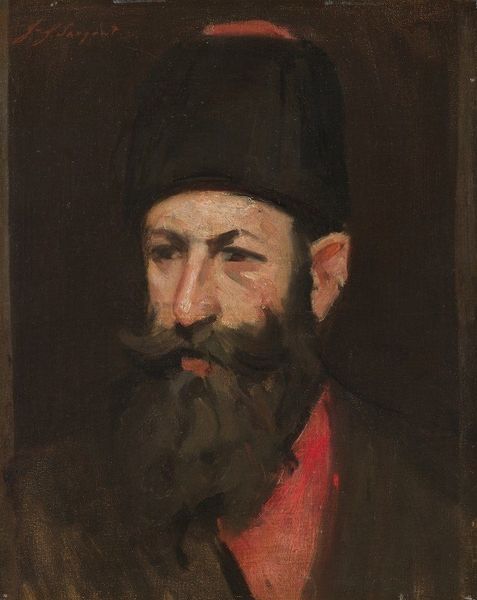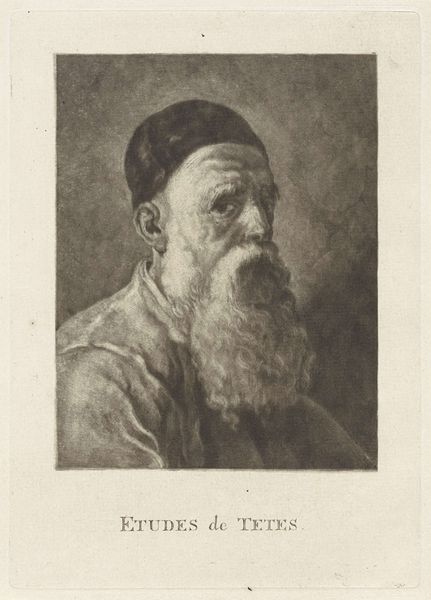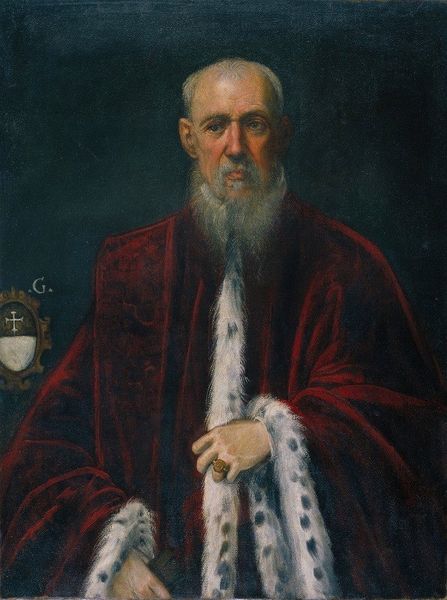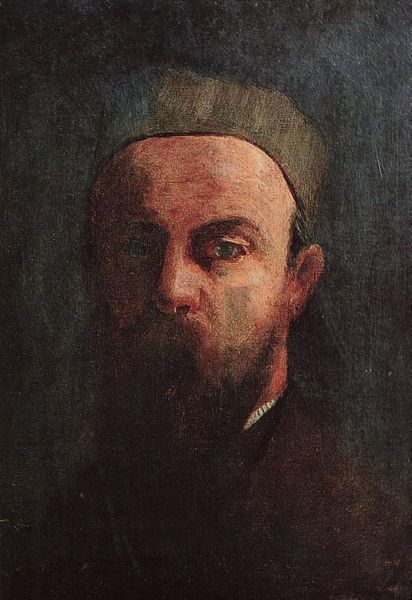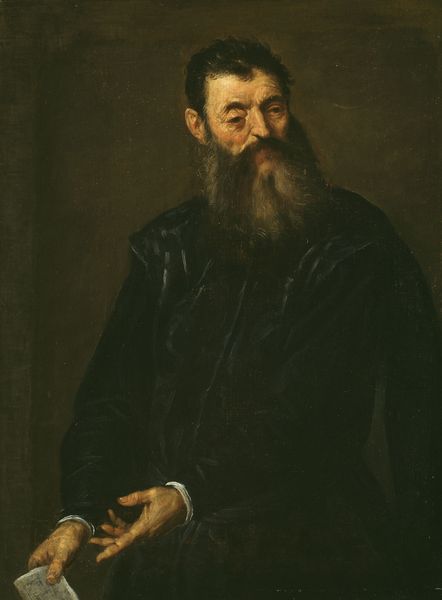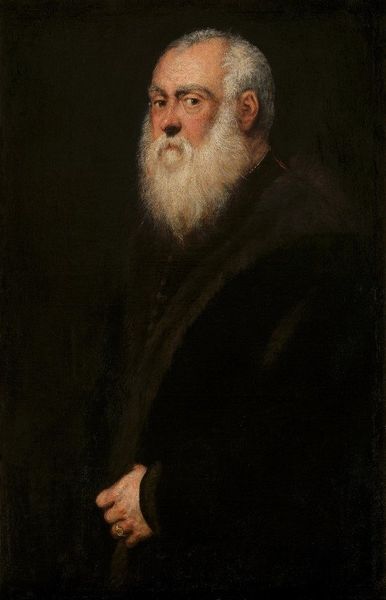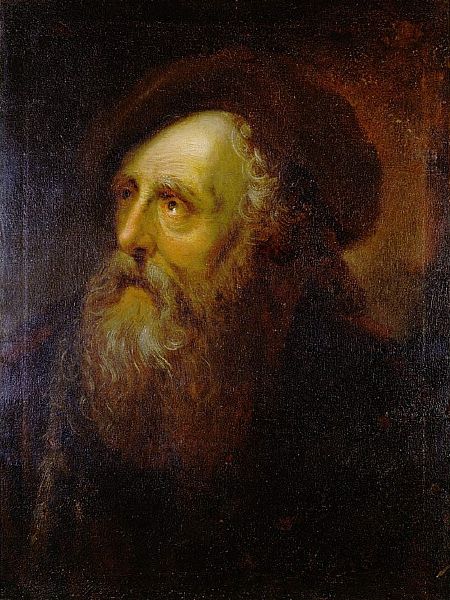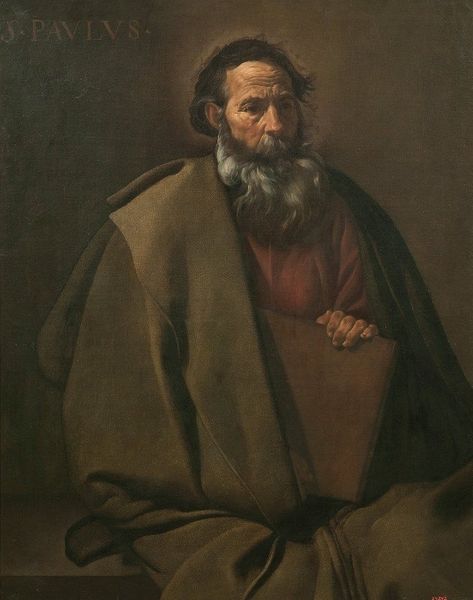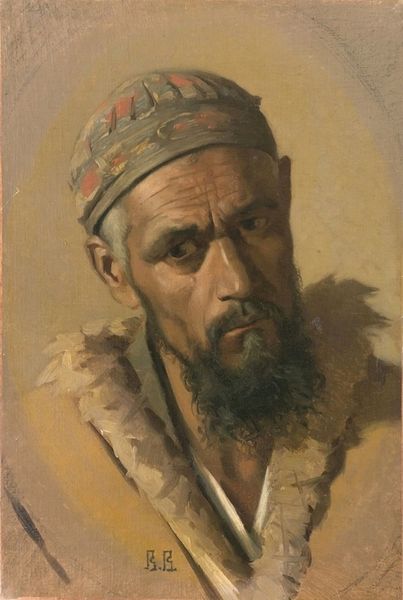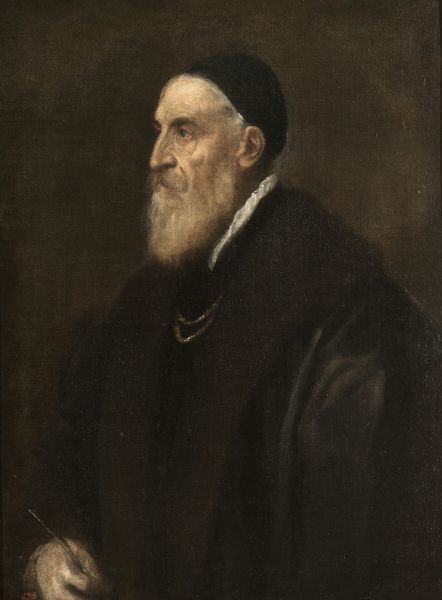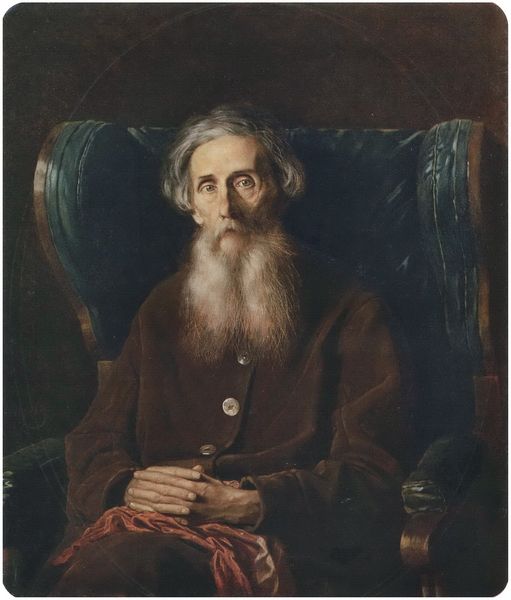
painting, oil-paint
#
portrait
#
figurative
#
painting
#
oil-paint
#
figuration
#
history-painting
#
academic-art
#
realism
Copyright: Public Domain: Artvee
Curator: Looking at this portrait, I’m immediately struck by its quiet intensity. There’s a vulnerability in the man’s gaze despite the formal composition. Editor: And what we're observing is Ilya Repin's "Portrait of a Man," an oil on canvas created around 1875. I'm interested in considering its context within Repin's broader body of work. How does it align, or diverge, from the artistic and political movements that he engaged with? Curator: It feels distinct. Compared to his more grand history paintings, this work has an intimate scale. There’s a stark realism in his depiction, not just of physical features, but also what feels like the sitter’s inner world. What does that realism suggest in terms of the social commentary inherent in portraying the subject? Editor: Well, the prevalence of realism and naturalism within Russian art during the late 19th century coincides with significant societal changes, including the emancipation of the serfs and evolving intellectual thought. I wonder how portraiture was being used, and if we might even draw connections between artistic developments and emerging class and political consciousness at the time? Who *is* this person that Repin has dedicated himself to paint? Curator: Exactly! Is the painting pushing against ideals about who is worth depicting? His direct gaze challenges us, and forces us to acknowledge his humanity. His garb signals wealth or status, perhaps even Orientalism via the cap—are these clues that complicate any potential for revolutionary understanding? Editor: The sitter's attire could, indeed, signal status, but the subdued palette prevents ostentation. This isn’t about idealizing a specific class; the realism transcends those readings. Instead, maybe we're being confronted by universal truths—age, contemplation, the burdens of experience. But let's consider also how exhibiting artwork in galleries at the time created a different audience for this kind of intimate portrait. Curator: That shift in the means of cultural production deeply resonates. To what extent do you believe these artistic explorations intersect with, or influence, contemporary discussions surrounding portraiture, identity, and the ethics of representation in museum spaces? Editor: That’s something to think about, for sure. This dialogue underlines how much our reading is influenced not only by social realities present at the time, but those of the present. Curator: Absolutely, an individual painted nearly 150 years ago prompting discourse about identity, class, and representation today—the potent impact and reach of art endures.
Comments
No comments
Be the first to comment and join the conversation on the ultimate creative platform.
